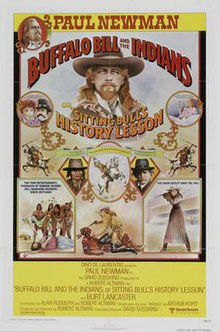
William Frederick Cody, known as Buffalo Bill, was an American soldier, bison hunter, and showman.

Sitting Bull was a Hunkpapa Lakota leader who led his people during years of resistance against United States government policies. Sitting Bull was killed by Indian agency police on the Standing Rock Indian Reservation during an attempt to arrest him at a time when authorities feared that he would join the Ghost Dance movement.

Quintet is a 1979 American post-apocalyptic science fiction film directed by Robert Altman. It stars Paul Newman, Brigitte Fossey, Bibi Andersson, Fernando Rey, Vittorio Gassman and Nina Van Pallandt.

Edward Zane Carroll Judson Sr., known by his pseudonym Ned Buntline, was an American publisher, journalist, and writer.
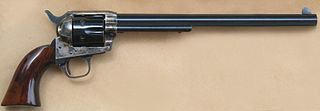
The Colt Buntline Special was a long-barreled variant of the Colt Single Action Army revolver, which Stuart N. Lake described in his best-selling but largely fictionalized 1931 biography, Wyatt Earp: Frontier Marshal. According to Lake, the dime novelist Ned Buntline commissioned the production of five Buntline Specials. Lake described them as extra-long Colt Single Action Army revolvers, with a 12-inch (300 mm)-long barrel, and stated that Buntline presented them to five lawmen in thanks for their help in contributing local color to his western yarns.

The revisionist Western is a sub-genre of the Western film. Called a post-classical variation of the traditional Western, the revisionist subverts the myth and romance of the traditional by means of character development and realism to present a less simplistic view of life in the "Old West". While the traditional Western always embodies a clear boundary between good and evil, the revisionist Western does not.
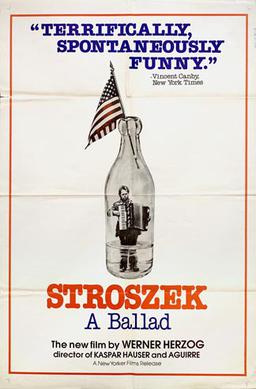
Stroszek is a 1977 West German tragicomedy film directed by Werner Herzog and starring Bruno S., Eva Mattes, and Clemens Scheitz. Written specifically for Bruno S., the film was shot in Plainfield, Wisconsin, and North Carolina. Most of the lead roles are played by inexperienced actors.
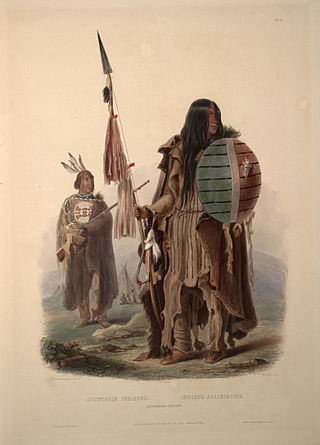
The Assiniboine or Assiniboin people, also known as the Hohe and known by the endonym Nakota, are a First Nations/Native American people originally from the Northern Great Plains of North America.
Pat McCormick was an American actor and comedy writer known for playing Big Enos Burdette in Smokey and the Bandit and its two sequels. He wrote for a number of performers such as Red Skelton, Phyllis Diller and Johnny Carson as well as for shows including Get Smart. McCormick had a distinctive appearance being 6'7" tall, weighing 250 lbs and having a walrus mustache.
Indians is a 1968 play by Arthur Kopit.

California Split is a 1974 American comedy-drama film directed by Robert Altman and starring Elliott Gould and George Segal as a pair of gamblers. It was the first non-Cinerama film to use eight-track stereo sound.

Stoney 142, 143, 144 is an Indian reserve of the Stoney Nakoda First Nation, comprising Bearspaw, Chiniki, and Wesley First Nations in Alberta, located between the Municipal District of Bighorn No. 8 and Rocky View County. The largest community of the Nakoda people, it is 56 kilometers west of Calgary.

Willy McBean and His Magic Machine is a 1965 stop motion animated time travel film produced by Arthur Rankin, Jr. and Jules Bass' Videocraft International in the United States and Dentsu Motion Pictures in Japan. It was presented by Marshall Naify, released by Magna Pictures Distribution Corporation on June 23, 1965.

Wild West shows were traveling vaudeville performances in the United States and Europe that existed around 1870–1920. The shows began as theatrical stage productions and evolved into open-air shows that depicted romanticized stereotypes of cowboys, Plains Indians, army scouts, outlaws, and wild animals that existed in the American West. While some of the storylines and characters were based on historical events, others were fictional or sensationalized.

Herbert Birchell "Bert" Remsen was an American actor and casting director. He appeared in numerous films and television series.
Buffalo Bill is a 1944 American Western film about the life of the frontiersman Buffalo Bill Cody, directed by William A. Wellman and starring Joel McCrea and Maureen O'Hara with Linda Darnell, Thomas Mitchell, Edgar Buchanan and Anthony Quinn in supporting roles.

Annie Oakley is a 1935 American Western film directed by George Stevens and starring Barbara Stanwyck, Preston Foster, Melvyn Douglas and Moroni Olsen. The film is based on the life of Annie Oakley.
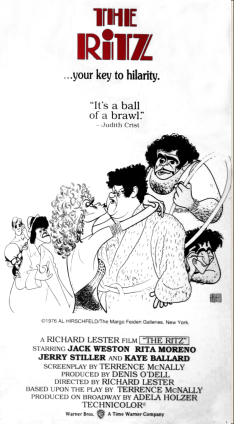
The Ritz is a 1976 British-American comedy farce film directed by Richard Lester based on the 1975 play of the same name by Terrence McNally. Actress Rita Moreno – who had won a Tony Award for her performance as Googie Gomez in the Broadway production – and many others from the 1975 original cast, such as Jack Weston, Jerry Stiller, and F. Murray Abraham, reprised their stage roles in the film version. Also in the cast were Kaye Ballard and Treat Williams. The film, Jack Weston, and Rita Moreno all received Golden Globe nominations in the comedy category. It opened to mixed reviews.

The 26th annual Berlin International Film Festival was held from 25 June – 6 July 1976. The Golden Bear was awarded to the American film Buffalo Bill and the Indians, or Sitting Bull's History Lesson directed by Robert Altman.
Jerri Duce, also known as Jerri Duce Phillips, is a 9-time Canadian barrel racing champion. She was the first Canadian woman to qualify for the National Finals Rodeo (1975) in the United States and was the first woman inducted into the Canadian Pro Rodeo Hall of Fame (1997). She also performed as a trick rider and stunt rider. She was inducted into the Alberta Sports Hall of Fame in 2010 and runs a horseback riding school.
